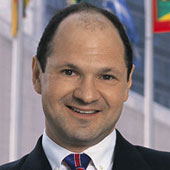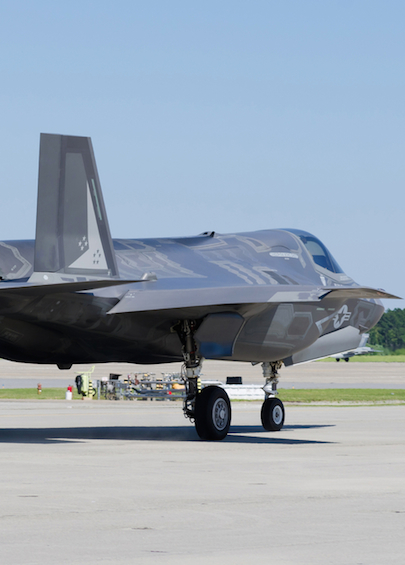ISIS and Pre-Revolutionary Russia
Are radical Islamists heirs to Russian Nihilists?
November 20, 2015
One of the first modern terrorist organizations emerged in the Russian Empire in the second half of the 19th century.
Underground bomb throwers in the Nihilist and People’s Will cells numbered in the thousands and for the first time in history, they developed a comprehensive political program, spelling out what their terror campaign planned to achieve and by what means.
Read his latest book: The Latchkey Murders (Russian Information Services, 2015)
Excerpt on The Globalist: Writing A Russian Detective Novel
They were not seeking revenge against the more odious government or police officials. Nor were terror attacks a way to improve the lives of the people by making the government treat them better.
It was in fact the exact opposite. As Lenin would later put it, “The worse, the better.” The radicals actually wanted the poor to suffer even more and the State to tighten the screws more severely.
Eventually, once conditions became untenable, the terrorists expected people to rise up, overthrow the government and build that wonderful society in which everyone would be equal, happy and there would be no violence.
People’s Will terrorists mounted a hunt for Czar Alexander II – not because he was a reactionary, but because he was too liberal. He had abolished serfdom and was about to institute the first elected body in Russia.
Predictably, a period of reaction followed his assassination in March 1881 and his reforms were rolled back. A quarter of a century later, in 1905, Russia exploded in its first revolution.
Terrorist acts in Russia succeeded with depressing regularity, with an astonishing number of top government officials assassinated in the years before World War I.
Terrorism polarized society and unleashed waves of repression. It made reforms and modernization very difficult and created an environment in which moderates and liberals were squeezed out.
There was no room for national reconciliation, only for further radicalization. Lenin’s older brother Alexander Ulyanov was involved in a plot to assassinate Alexander III and was hanged in 1887 – an event that scarred his 17 year-old brother’s psyche.
Corrosive effect on society
The brutality of Russia’s Civil War in which both sides committed unspeakable atrocities and some 1.5 million military personnel and 8 million civilians lost their lives, was certainly exacerbated by this radicalization.
The Bolsheviks, while never shy of employing terrorist means and, especially, state terror, understood terrorism’s corrosive effect on society.
After the 1917 revolution they found themselves in a tricky situation. They had to acknowledge their debt to early leftist terrorist movements. A central thoroughfare in St. Petersburg was named after Stepan Khalturin, a terrorist who blew up the Winter Palace in 1880 in an attempt to kill the Czar but got 11 soldiers instead.
At the same time, Soviet leaders were obsessed with their own protection and never tired of telling people that terrorism was extremely ineffective as a means of political struggle. However, terrorism is, in fact, deadly effective and it can change the course of history.
Just one example: the modern world emerged from the ashes of World War I and the war itself was a direct result of the assassination of Archduke Franz Ferdinand, the heir to the Austrian throne, by a Serbian terrorist. In our own time, many people in the United States refer to the “post-9/11 world.”
Russian terrorism has had a formative influence on the goals of modern terrorist organizations.
Terrorists everywhere deliberately strive to worsen the condition of the very groups whose cause they claim to champion. They sow hatred and fear and they want to destroy any chance for compromise. They want a war to the death.
Unfortunately, all too often, they provoke the kind of reaction they want — more hatred and more repression. It can even be said that terrorists are among the few effective “politicians” of the modern era.
Conflict of civilizations
Palestinian terrorists started up by blowing civilian airliners and killing Israeli civilians, including children and Olympic athletes. Their goal was never to bring about a peaceful solution to the Israeli-Palestinian conflict, but to make the Israelis hate Palestinians indiscriminately.
They wanted the conflict to drag on and both sides to engage in a tit-for-tat retribution so that the only way in the end would be a complete destruction of one of the nations. It has to be admitted that they are succeeding. The two sides are much further apart today than they were half a century ago.
The Red terror of the 1970s and 1980s in Italy and Germany pursued a similar goal.
Terrorist cells targeted police and government officials with the express purpose of bringing about a fascist dictatorship, which they believe capitalism would resort to in the end. Only then, they argued, would the working class be radicalized enough to stage a socialist revolution.
Al-Qaeda and ISIS similarly want the West to take revenge not only upon them, but also on all Muslims indiscriminately.
They want us to harass Muslims in our midst and to look at every dark-haired bearded man with fear and suspicion. They want Muslim kids to be unemployed and undirected. They want a conflict of civilizations.
True, there are huge differences between today’s ISIS terrorists and their Russian precursors of 150 years ago. The Nihilists, irrespective of their means, believed in the bright future of universal equality, freedom and happiness.
They believed in science, education and progress and rejected religion because it kept the masses ignorant and superstitious. They promoted equality between the sexes.
Muslim radicals are exactly the opposite. They are looking back to the Middle Ages and to traditional customs sanctified by the Quran. They reject modern science and education. Their views on the place of women in society are retrograde.
Differences and similarities
One big difference is that Russian terrorists never targeted the civilian population — something radical Muslims do time and again. But this is a false distinction. Theorists and practitioners of leftist terrorism never allowed an innocent life to stand in the way of the “bright future.”
On the other hand, there are plenty of similarities, ranging from intolerance for moderation and compromise, to disdain for the cultural heritage of human civilization.
Russian leftists a century ago regarded “bourgeois culture” as decadent and depraved and promised to create their own cultural and artistic monuments — while destroying the old ones in the meantime.
ISIS thinks the same about the modern West and even the classical Greco-Roman world. It is keen to blow up priceless historical monuments in Palmyra and elsewhere.
All terrorists think of themselves as a sacrificial vanguard, ascetics and martyrs dedicating their lives to their cause – the image that was promoted by the early Russian theorist of terrorism Sergei Nechayev.
But most importantly, all terrorists share the ability to deceive themselves and indulge in magical thinking. They believe that violence, by breeding even more violence, can somehow bring happiness.
Takeaways
A difference between Russian nihilists and radical muslims is that the former never targeted civilians.
Both Russian nihilists and radical muslims are intolerant of moderation and compromise.
Russian leftists regarded “bourgeois culture” as depraved. ISIS thinks the same about the West.
All terrorists think of themselves as a sacrificial vanguard dedicating their lives to their cause.


